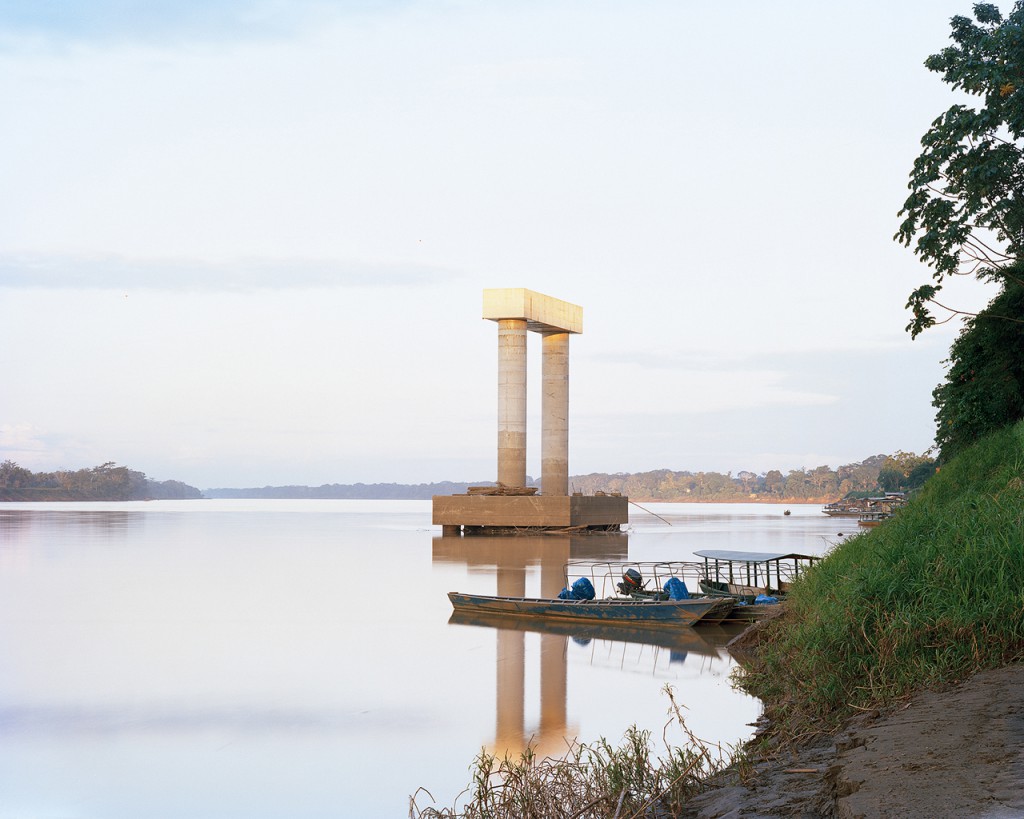On an early-morning August flight from Anchorage to Barrow, the northernmost point of Alaska, I sat quietly staring out the window at the infinite landscape of the North Slope. The passengers on board included oilmen with Texan accents heading for the pipelines of Prudhoe Bay. There were scientists and PhD students en route to study climate change in their Arctic research stations. Also on board were Iñupiat natives, heading home after visiting family in the city, and the Whalers football team, returning from a game against their cross-mountain rival, Fairbanks High.
As we flew over boggy tundra towards the edge of North America, I caught bits of passengers’ conversations, from overtime pay for repair work on the pipeline to new marine-mammal tracking technologies, to potential dates for the high-school prom. Everything converges in a place of extremes like the Alaskan Arctic.
A year earlier, I had traveled to the Peruvian Amazon, where for two summers I made art along the Madre de Dios River. There I found a similarly complicated patchwork of communities, including indigenous villages, illegal gold-mining camps, scientists, and those involved in ecotourism. The new Interoceanic Highway, which ultimately would connect Sao Paulo, Brazil, to Lima, Peru, had been cut through the Andes. It brings thousands of migrants from the impoverished rural highlands down into the Amazonian basin to illegally log mahogany and carve out vast pits in the forest in search of gold dust.
In these and other places of environmental extremes, complexities abound as stakeholders with conflicting interests grapple with their relationship to the surrounding natural world. It would be hubristic to claim any form of resolution among such competing environmental, economic, and political contours. Yet as an artist, I find it energizing to be among these very complexities and the tenuous future they suggest, less for the answers they provide than for the questions they raise.
Several years ago, I followed a dirt road through the Deschutes National Forest of Oregon’s Cascade mountains. I arrived at a dusty camp of slapdash shacks of tree branches and tarps, a temporary home for commercial mushroom hunters. Known as pickers, they were a uniquely American mix of Southeast Asian multigenerational families, rural counterculture folks, and Mexican migrant laborers. There was a former military commander from Laos, a nail-salon owner from Stockton, and a runaway from Portland. All had come to search for Matsutake mushrooms among the pine needles.
In the evenings, buyers would set up roadside stands, made of pickup trucks and empty shipping containers, where pickers would sell the day’s load. The price paid for the mushrooms had been set earlier that day, halfway around world, in the produce auction houses of Japan. These Matsutakes were to be sorted, packed, and flown within a couple of days to Tokyo, where they could fetch several hundred dollars at auction and in boutique produce markets.
It’s a compelling narrative, intertwining the hyper-local and the insatiable reach of global trade: a small marshmallow-looking fungus unearthed from volcanic soil in Oregon pine forests by a child of Laotian immigrants is sold to entrepreneurial backcountry middlemen and ultimately presented on a delicate bed of fake evergreen fronds in a Tokyo restaurant’s window display. It seems like the future is here already.
